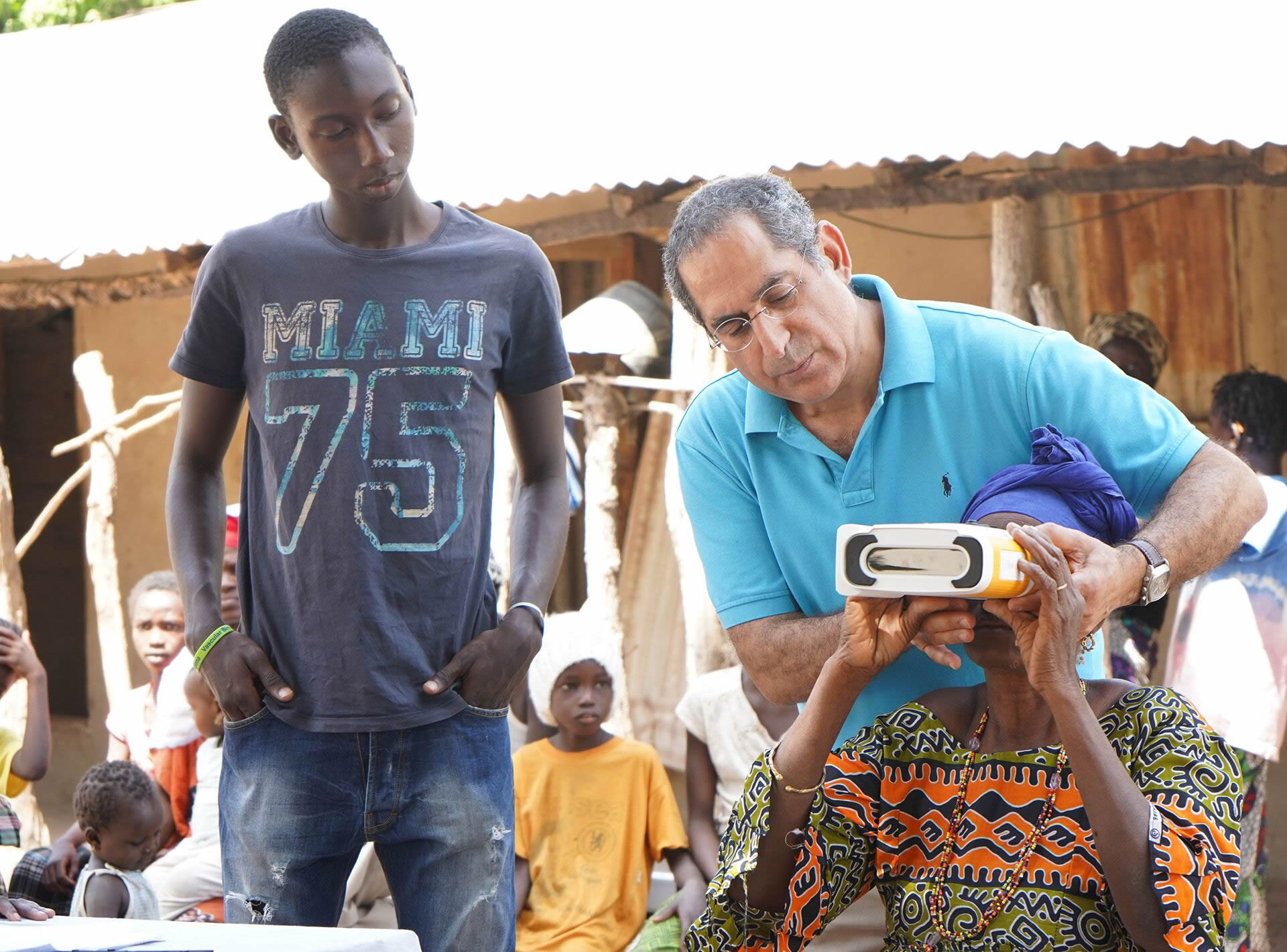
1 billion: the World Health Organization’s estimate of how many people suffer from correctable low vision. This is a loss for more than just those in need of vision care, said Bijan Azami, who founded the nonprofit Twobillioneyes to address problem. “We need to empower the people who do not have access to clear vision, because we need them to bring the fruits of their understanding to the table…because we are all connected in this world.”
An optician working in the Netherlands, Azami was stunned to learn how many people lack the simple solution to such a fundamental limit in their lives, and he felt helpless in the face of the scale and complexity of the problem. “The challenge, for me, was to find a massively scalable solution,” he said. “A solution for a few hundred thousand people would be good, of course, but not good enough…if it’s not scaled to the problem it’s not really the solution.”
Researching the problem, Azami identified four factors affecting the problem: the price of the eyeglasses; the availability of adequate eye examinations; the logistics of performing examinations and fulfilling prescriptions; and language barriers. Crossing all of these issues is resource availability, including both material resources like electricity and human resources, like vision care expertise. He focused his approach on two key bottlenecks: The prescription for corrective glasses, and the accessibility of affordable glasses.
Azami realized the problem can’t be solved only by highly trained optometrists working with traditional equipment. “Even if all the opticians and optometrists in the world went to work on it, full time, they would not be able to do all of it. We need more capacity than we have, so the only real solution is to build capacity. If you insist that doctors solve problems that don’t take doctors to solve, you deprive millions from what they need.” He pointed to the United Nations’ Convention on the Rights of Persons with Disabilities (CRPD), which affirms nations’ responsibility to help people with disabilities, including low vision.
“The only long-term solution is to build capacity,” Azami concluded. The Twobillioneyes response has been to design a mobile system for single-step vision correction, and a training program to grow a sustainable corps of independent businesspeople—“Vision Collaborators” in the Twobillioneyes nomenclature—to perform the service in their communities. To date, Twobillioneyes has prepared Vision Collaborators in Kenya and Gambia.
The mobile system includes two kits: the vision kit and the eyeglasses kit. The vision kit includes a QuickSee (a portable wavefront autorefractor that performs clinical-quality measurements), a small wireless printer linked to the QuickSee, a tool to measure pupillary distance (PD), a trial frame and lenses, a mobile lensometer, a power bank, a vision chart, and a meter stick to position the vision chart correctly. The eyeglass kit contains all the parts and tools the technician needs to produce eyewear indicated by the exam. The parts were all chosen or designed to be inexpensive, durable, comfortable, easily replaced or updated (as in the case of children whose needs can change quickly) and assembled without machines or electricity.
Once trained to use the equipment and understand basic vision health principles, the Vision Collaborators are prepared to serve their customers in just 30 minutes from start to finish. They begin by taking a history, and then with QuickSee and the trial frames perform the objective and subjective refraction testing. (If the Vision Collaborator finds indications of eye health problems apart from refractive errors, they recommend the customer seek appropriate medical care.) With the results in hand, the Vision Collaborator assembles and fits a new pair of eyeglasses.
The QuickSee autorefractor in the vision kit was a key enabling technology for Twobillioneyes. Early in his solution design, Azami said, “I knew refraction would be the biggest part of the correct prescription, and I saw there were people working on portable autorefractors, so I decided to focus on my specialty, which as an optician and designer was to find out what would be the ideal pair of glasses for remote or low-income communities with few resources.”
Twobillioneyes has used QuickSee in their vision kits since the spring of 2018. That summer, they trained eight Kenyans in nine days to perform the vision tests and assemble eyeglasses. In three weeks, they performed 590 tests and prepared 217 pairs of eyeglasses. The majority of their customers were truck drivers, who were screened as part of an initiative to improve road safety in the country. “QuickSee is the best solution for this that I’ve seen, and the most affordable one,” he noted.
Azami says the real purpose of Twobillioneyes is to pursue social justice—but not in the way well-resourced Westerners typically think about it. “Sometimes it seems like we are the ones helping others, that ‘they’ need ‘our’ help,” Azami said. “But many of them are happy what they’re doing, they are adapted to their circumstances…By helping them, we are actually helping ourselves. I believe we are all connected, just like the limbs of one body. As an organic unity. If one suffers, all suffer. We need everyone to make this world a better place.”
Bijan Azami
Twobillioneyes Foundation
Oegstgeest, the Netherlands
www.twobillioneyes.org

Please note: Our Privacy policy and Terms of service were updated on September 30, 2025
Are you ready to learn how to use QuickSee Free / Free Pro effectively? Tell us about yourself and your circumstances and we will reach out to arrange a training session with you.